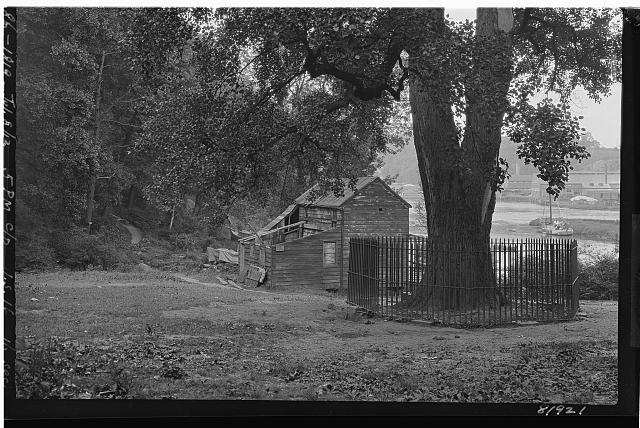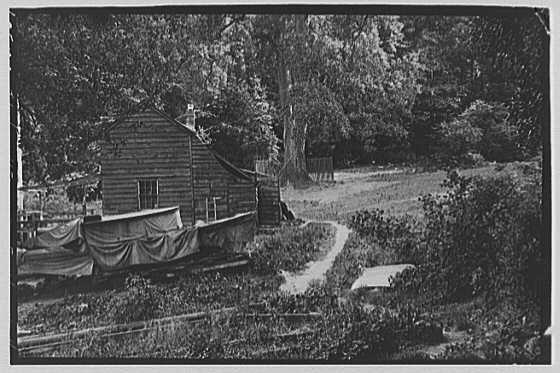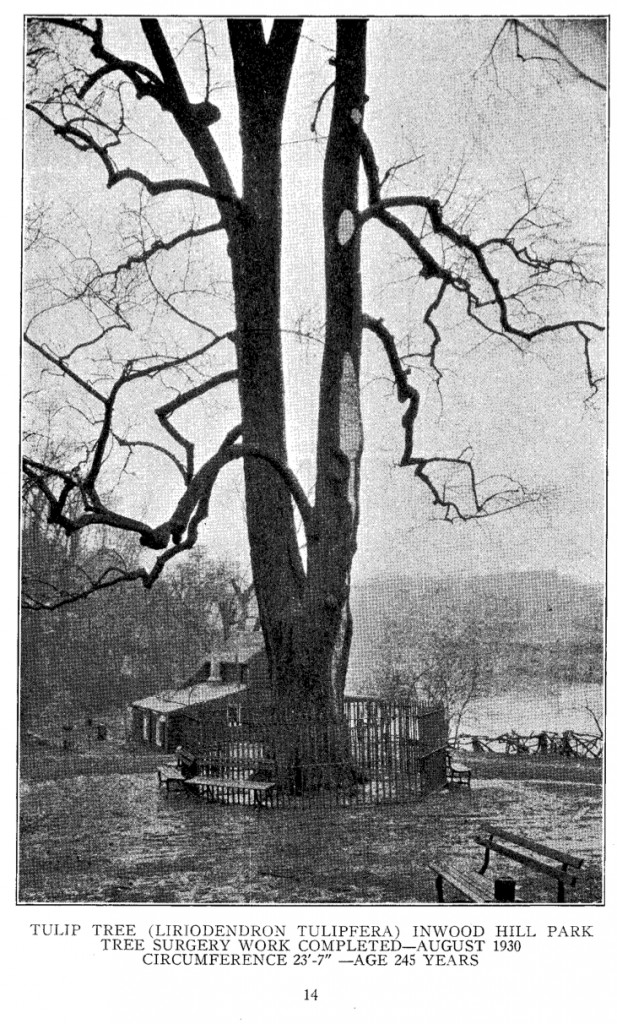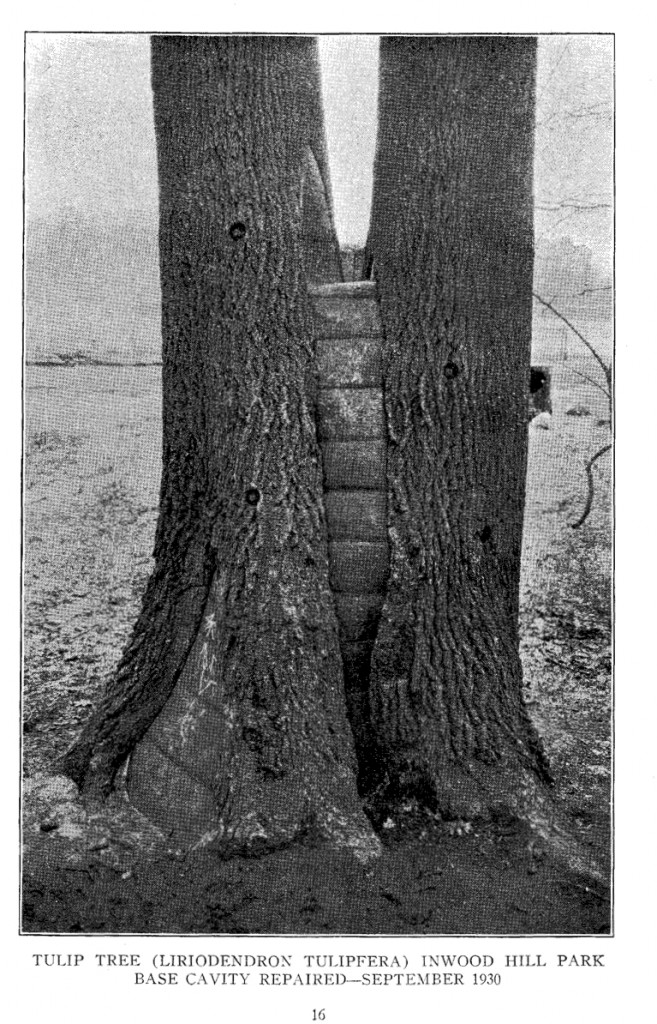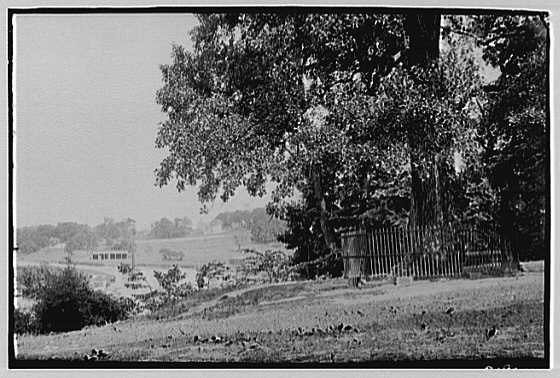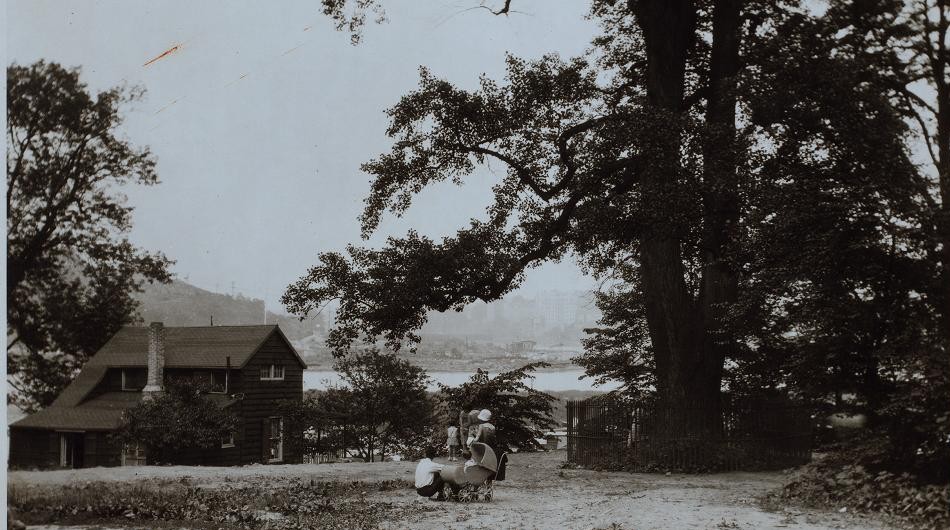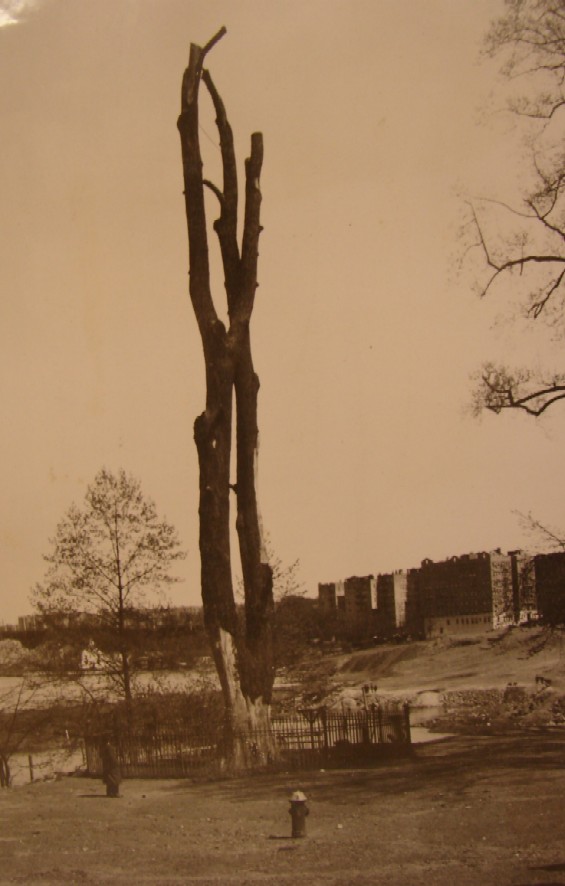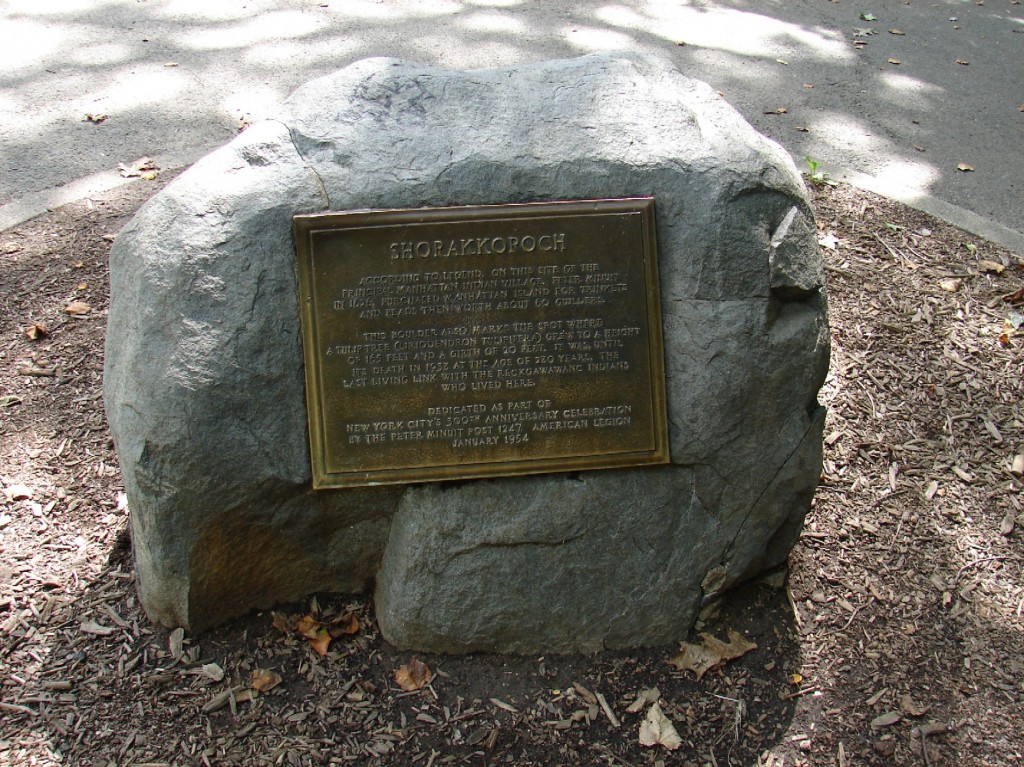Before Inwood Hill Park, before there even was an Inwood, a mighty Tulip grew in the forest. In a new city lacking a sense of anything from antiquity, New Yorkers latched onto a tree.
The giant tulip of Inwood became a popular destination for picnickers, school children and hikers looking to escape the other world downtown.
In the minds of early New Yorkers the tree stood as the only witness to their then fairly recent past. It’s easy to imagine a teacher pointing to the Spuyten Duyvil and telling her young wards that this is the spot where Henry Hudson and his crew on the Half Moon first set foot on the shores of Manhattan.
And while the tree no longer stands, the site is marked with a boulder, a magnificent body of photography and written word concerning the tulip has survived.
An annual report published by the American Scenic and Historic Preservation Society in 1913 describes both New York’s love for the tulip and the desperate attempts to save the dying giant:
“On Wednesday, October 30, 1912, exercises were held under the auspices of Park Commissioner Stover at…’the oldest and biggest tree in Manhattan, the giant tulip of Inwood.’ This tree stands on the flat land on the east side of Inwood Hill, on the west shore of Spuyten Duyvil Creek near the southernmost bend of the creek. Near it are shell deposits and rock habitation of the aborigines.
The Park Department has had all the dead wood cut out of the tree, filled the cavities with cement according to the methods of modern tree surgery, and erected around it an iron fence, in hope that this ancient tree may stand for centuries to come.”
The following description, in gold lettering marked one of the cement fillings beneath the tree, “Tulip Tree. Liriodendron tulipifera. Circumference, 19 feet. Age 225 years. Henry Hudson entered this inlet in 1609 and may have met the Indians who used the place for a camp, as shown by the quantity of old broken oyster shells around this tree and nearby.”
At the time, the giant tulip grew on private property and a neighborhood movement to buy a small parcel of land surrounding the tree to be presented to the city never materialized.
The tree was an iconic symbol for generations. Countless photos and sketches show the tree in a constantly changing topography as the wheels of change widened waterways and altered the grade of the land.
Despite man’s best efforts to save the tree the giant tulip fell victim to a storm in 1938.
A tragic photograph captures the once mighty giant still standing her ground, gazing at the ever evolving neighborhood she had guarded through the centuries.
Today a new plaque marks the spot where the tree once stood. It reads:
“According to legend, on this site of the principal Manhattan Indian Village (Shorakkopoh), Peter Minuit in 1626 purchased Manhattan Island for trinkets and bead then worth about 60 guilders.
This boulder also marks the spot where a tulip tree (Liriodendron Tulipera) grew to a height of 165 feet. It was, until its death in 1938 at the age of 280 years, the last living link between the Reckgawawanc Indians who lived here.”
The new plaque was put in place in 1954 by the American Legion to commemorate New York City’s 300th anniversary.

